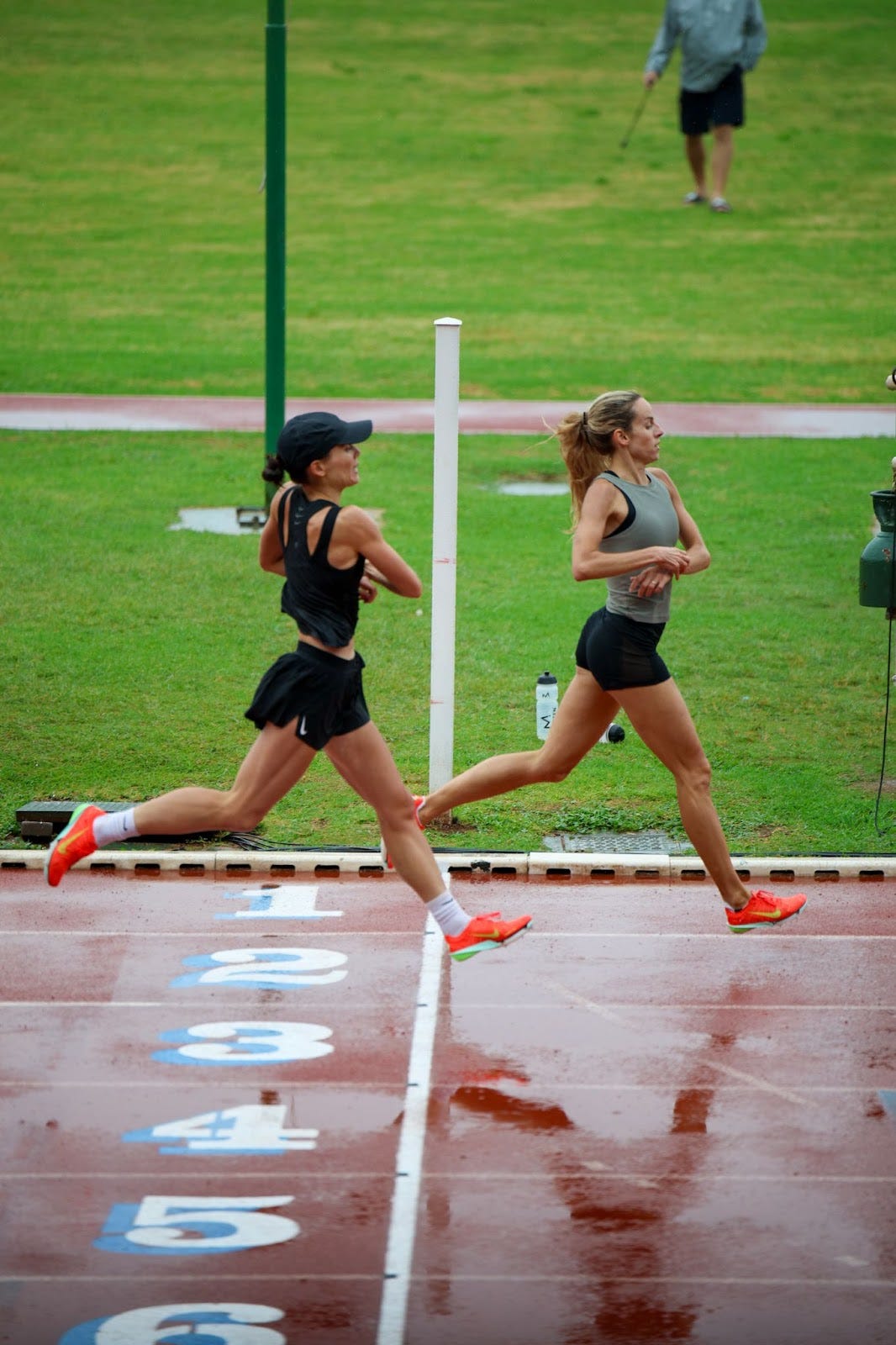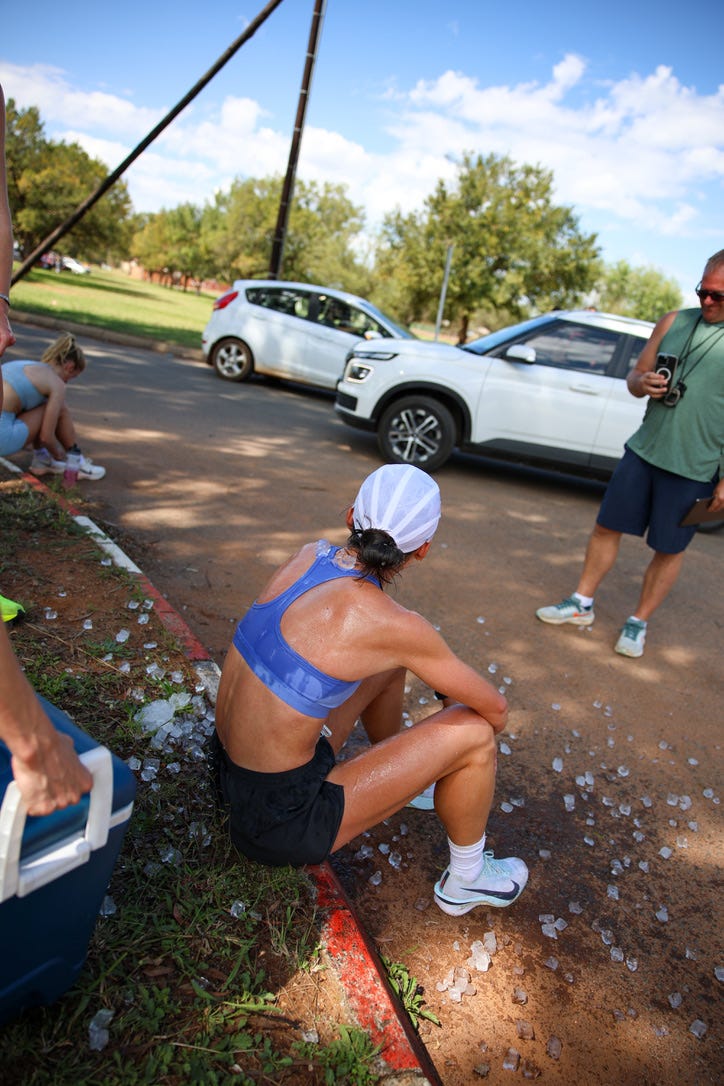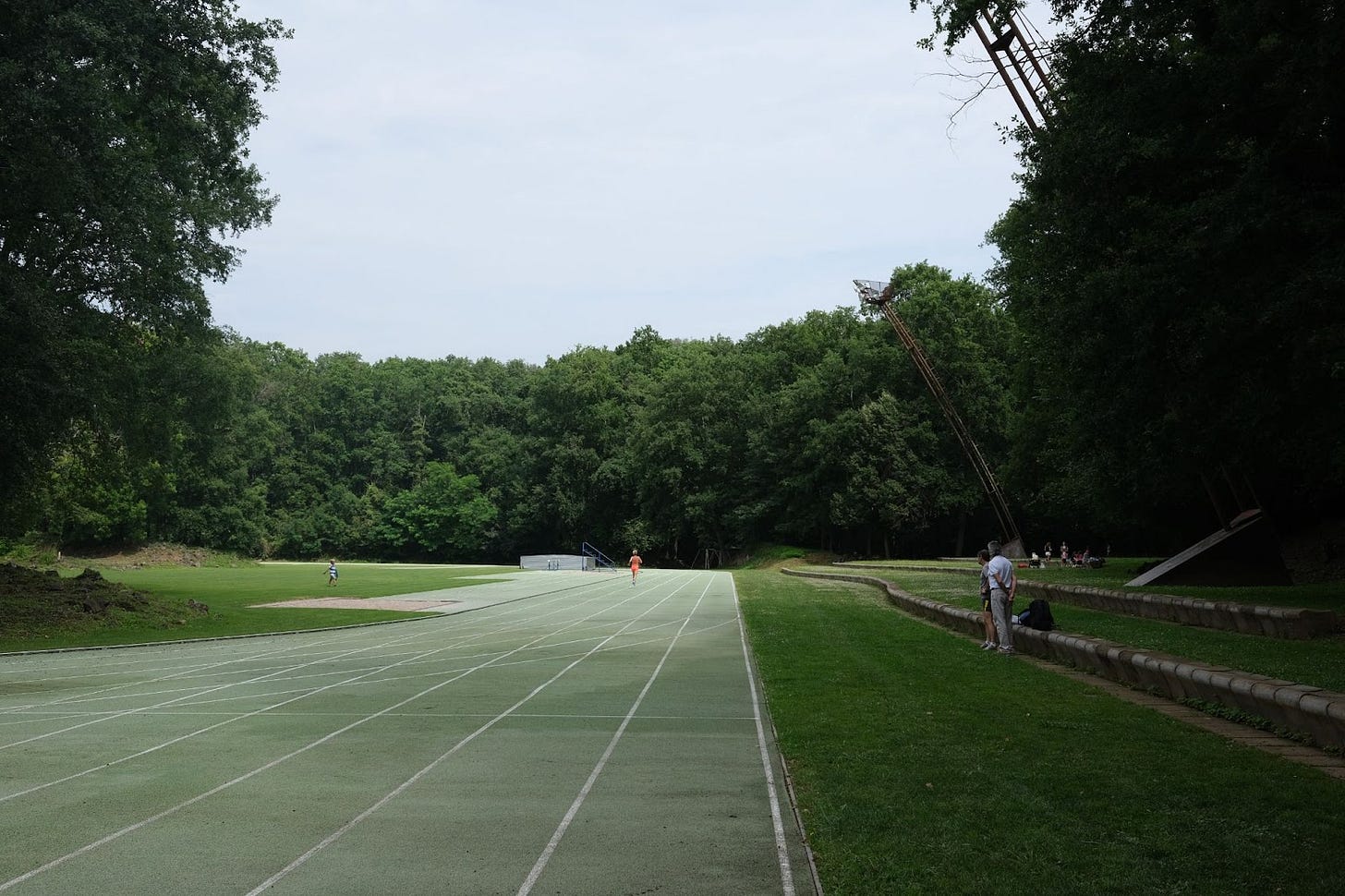Camp complete!
I’m writing this issue from Keely’s Manchester apartment. I’m staying with her for a few days before moving to a sublet. We first became friends four years ago through our agent Caroline, at a time when I had the faster PB. Now she’s one of the best 800m runners of all time. Some moments with Keely – cruising around Manchester in a convertible, accompanying her at a Beyoncé concert on Nike’s dollar – make me feel like I’m a kid with leukaemia and the Make-A-Wish Foundation has kindly given me the opportunity to spend time with a famous athlete before I succumb to my illness.
The second half of camp marked a descent into the seven realms of fatigue.
My Achilles has been mint, so I’m calling this the end of that saga – but I picked up some sort of virus. In one session my peak heart-rate was 217! Alarming, but also cool? I’ve never recorded a heart-rate over 200 before. Usually I peak in the high 180s.
Something I’ve learnt about myself over the years is that the more tired I get, the darker life seems to look. So the end of camp felt grim. However, as sure as I know that fatigue lets the demons in, I also know that it will pass, and I will complain non-stop the entire time.
I’ve had five different running coaches over my life. Each setup had a distinct group culture. M11’s is what I would describe as structured chaos. There’s a set session, but with two dozen athletes between the ages of about 16-32, it can get messy.
For example, our ‘gears’ session is 45-65 minutes of continuous mixed-pace running. We start together, but add in altitude, heat, and competitiveness, and things start to unravel quickly. I’ll pass people who are pissing in the bushes, taking drink breaks, stopping with some sort of real or made-up injury, and throwing up on the side of the road because they didn’t pace themselves.
My theory is that thriving in this chaos is possible only because the coaching team (husband and wife, Trevor Painter and Jenny Meadows) are unconditionally loving and supportive. This approach of high challenge + high support is backed up by sports psychology, because you’re more willing to push yourself and risk failure if you feel psychologically safe.
Track of the week: Tossols Basil Athletics Stadium
We’re going into the archives this week to critique one of the most beautiful tracks in the world: Tossols Basil Athletics Stadium in Olot, Spain, designed by the Spanish architecture firm RCR Arquitectes and completed in 2000.
This was the track I used in July 2023 during a two-week solo training block.
The track was built in a forest clearing in a parkland network along a river that flows into the town centre. Much of the original vegetation was retained, including trees and rocky outcrops on the infield. The deciduous trees reflect the changing seasons. RCR also designed a few other structures along the parkland network with the same material palette of corten, pebbles and stones.
In peak summer, the dense forest surroundings prevent wind flow, so even with shade, there is no relief from the humidity. Training here was suffocating.
I’ve never experienced a track where views were obstructed through the infield. It was fantastic to have pockets of shade while resting between reps, though it made it tricky for my partner to keep track of me and time my splits.
A local runner complained that you couldn’t actually use this track for competition because of the obstructed view. To him, the beauty wasn’t worth it if the functionality was compromised.
I remember nailing a split 600m session here – and two weeks later, I ran my current 800m personal best (and Australian record) of 1:57.78 at the London Diamond League.
During one training session, a group of schoolchildren and their teacher sat on the terraced seating along the home straight, painting the scene. This was wonderful. A track built as engaging landscape architecture, rather than a specialist plastic playground for muscular children (athletes), can integrate athletics and running into our experience of the outdoors, similar to coastal pools.
I hope we can visit Olot again one day.
A sketch of … a nice day
The three-week mark of any long trip seems to be when homesickness starts to sink in. Things aren’t new and exciting any more. My hack to manage the despair is to watch Jane Austen movie adaptations and excessively text sad and desperate messages to my friends and partner back in Melbourne.
My sketch reflects this yearning. It’s actually based on a still from the Rain on Tartan film that I made with Ben Clement showcasing the rhythms of George Knott Reserve in Clifton Hill.
In the coming weeks I’d like to post a bonus Q&A newsletter. Please send your questions via email, Substack, or this anonymous form (which could also come in handy for death threats if I underperform in competition).











